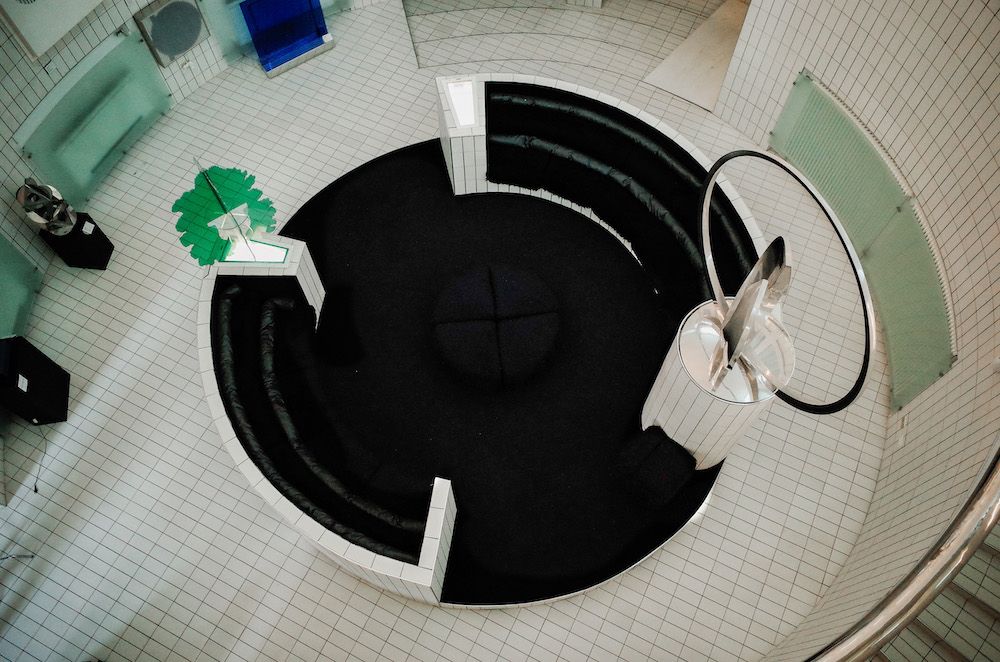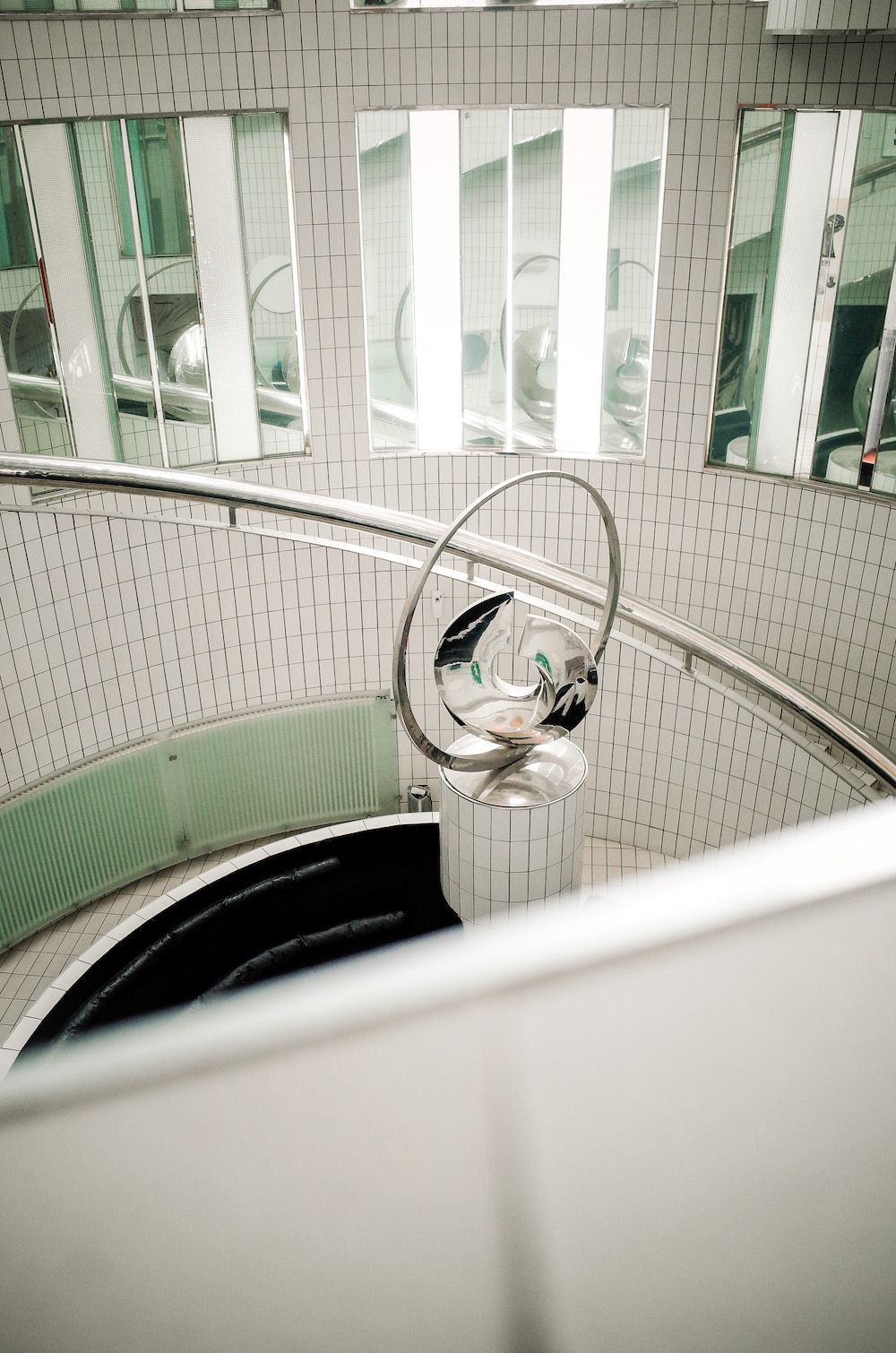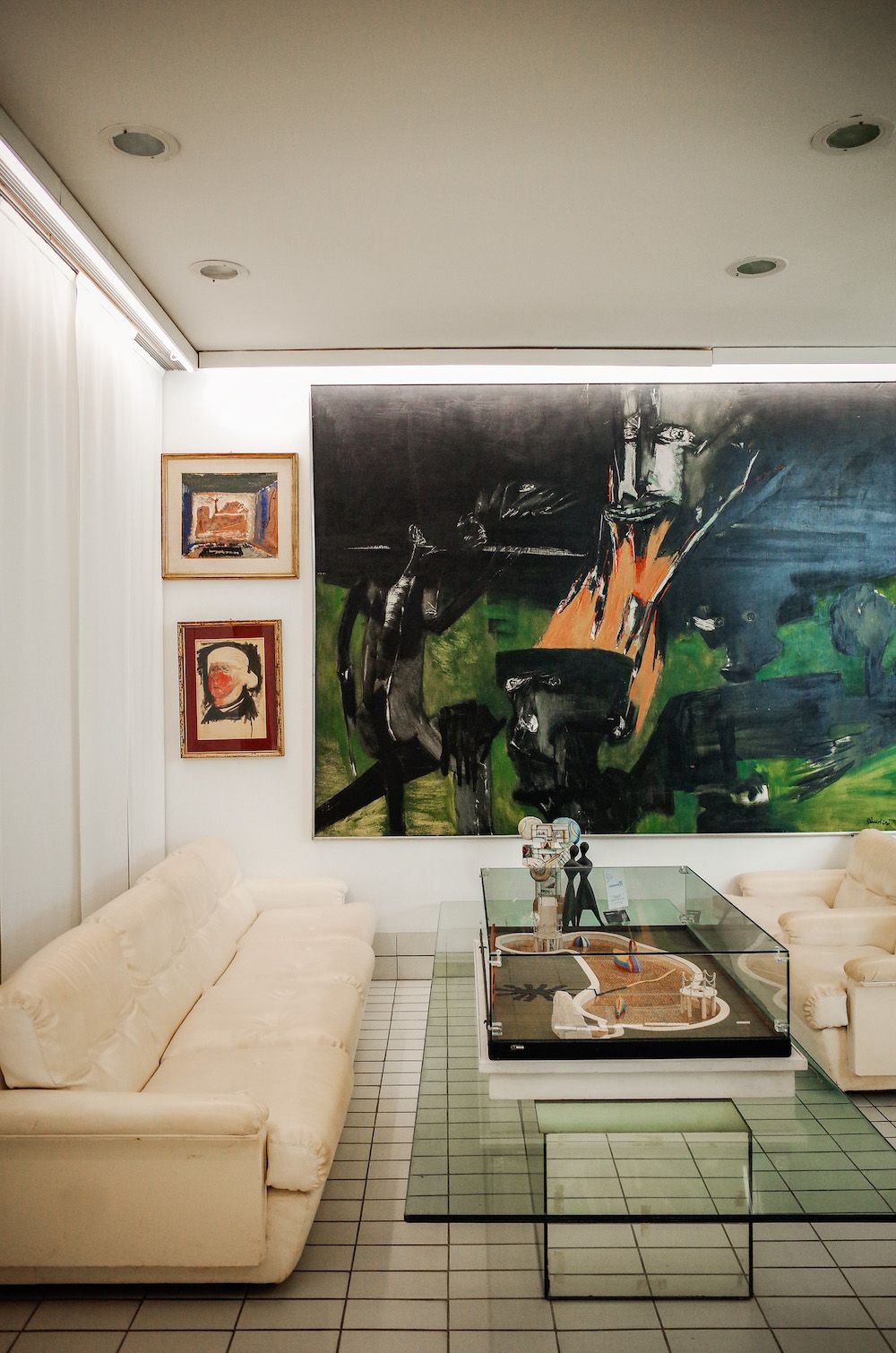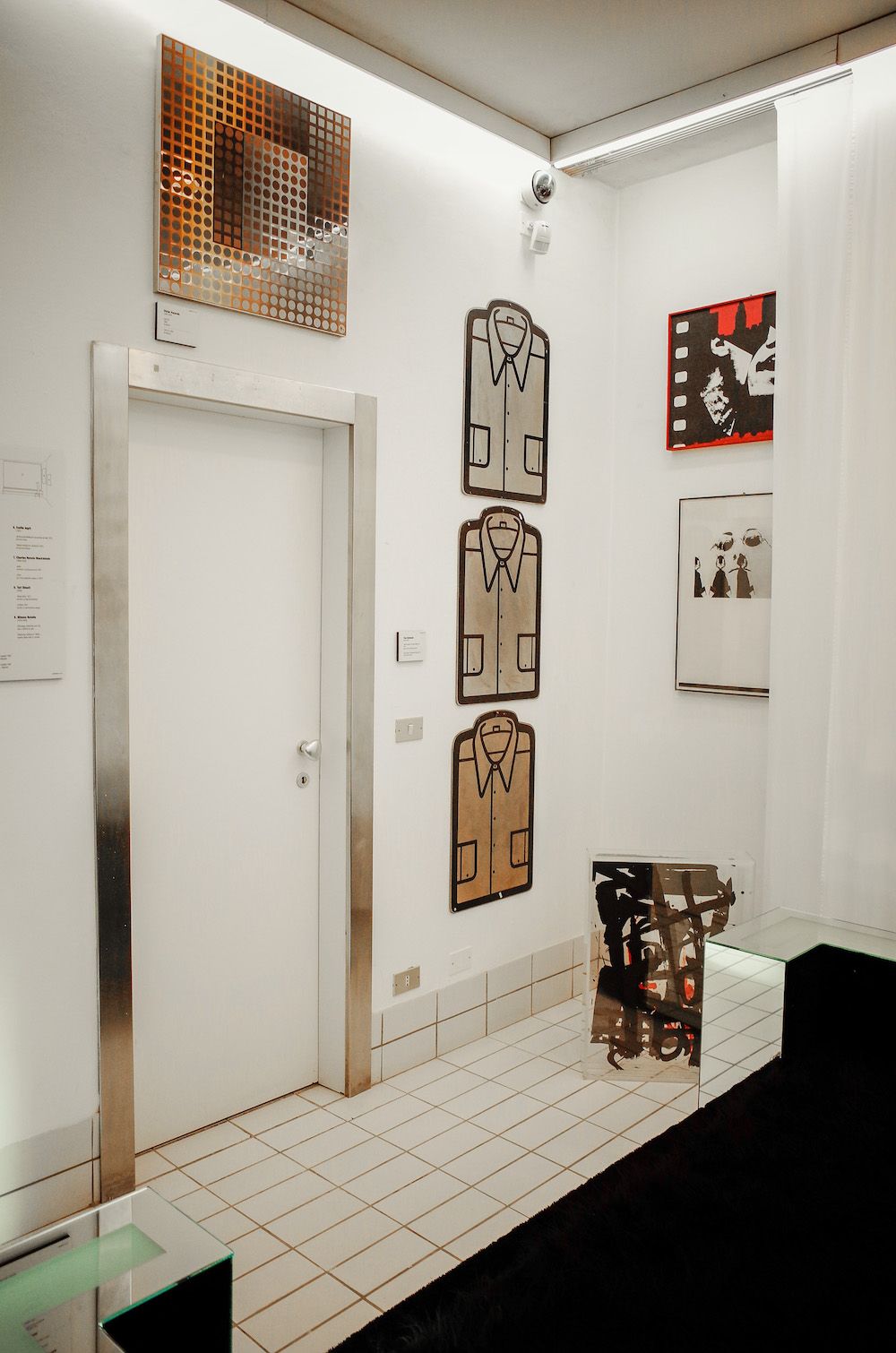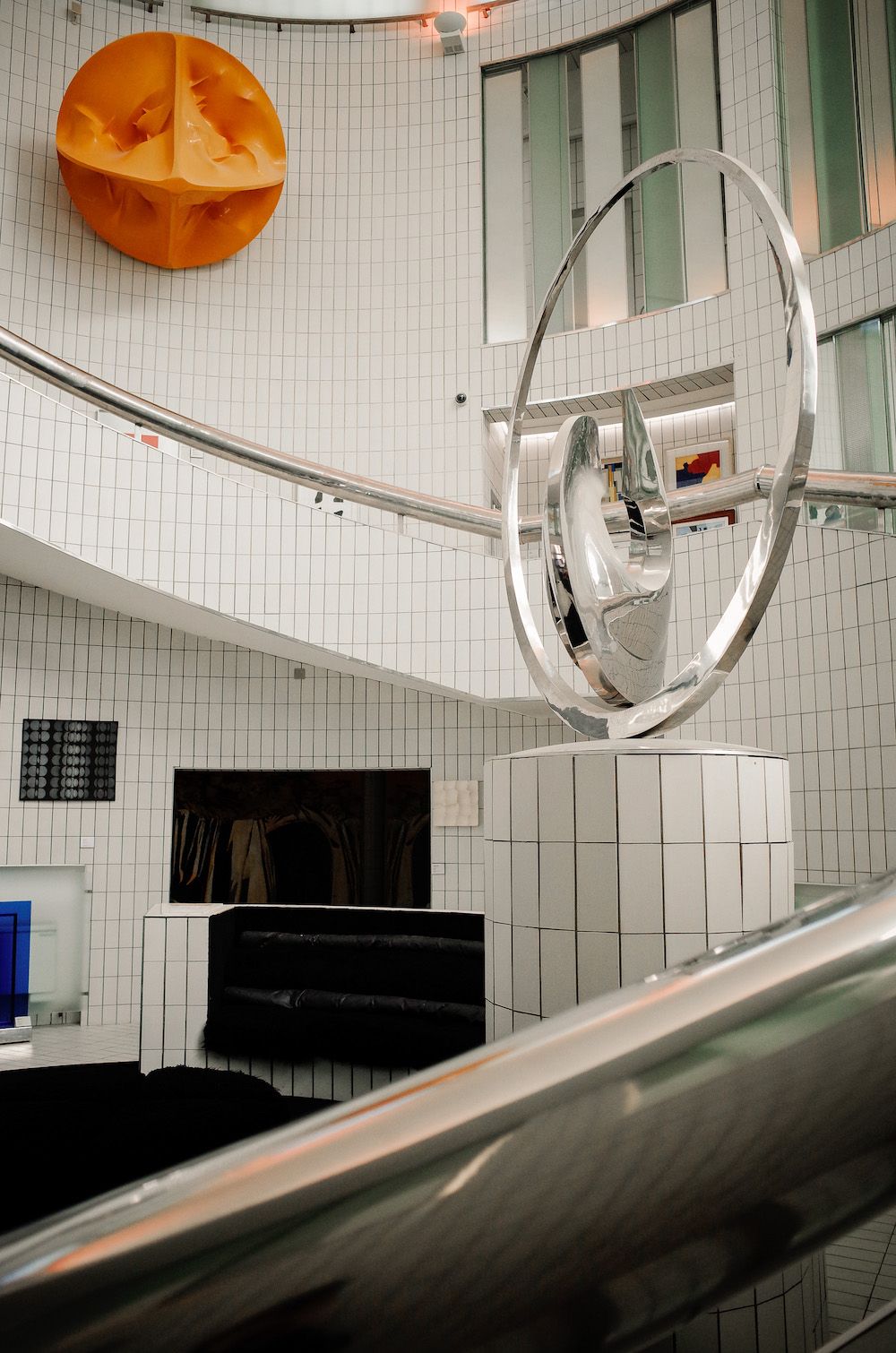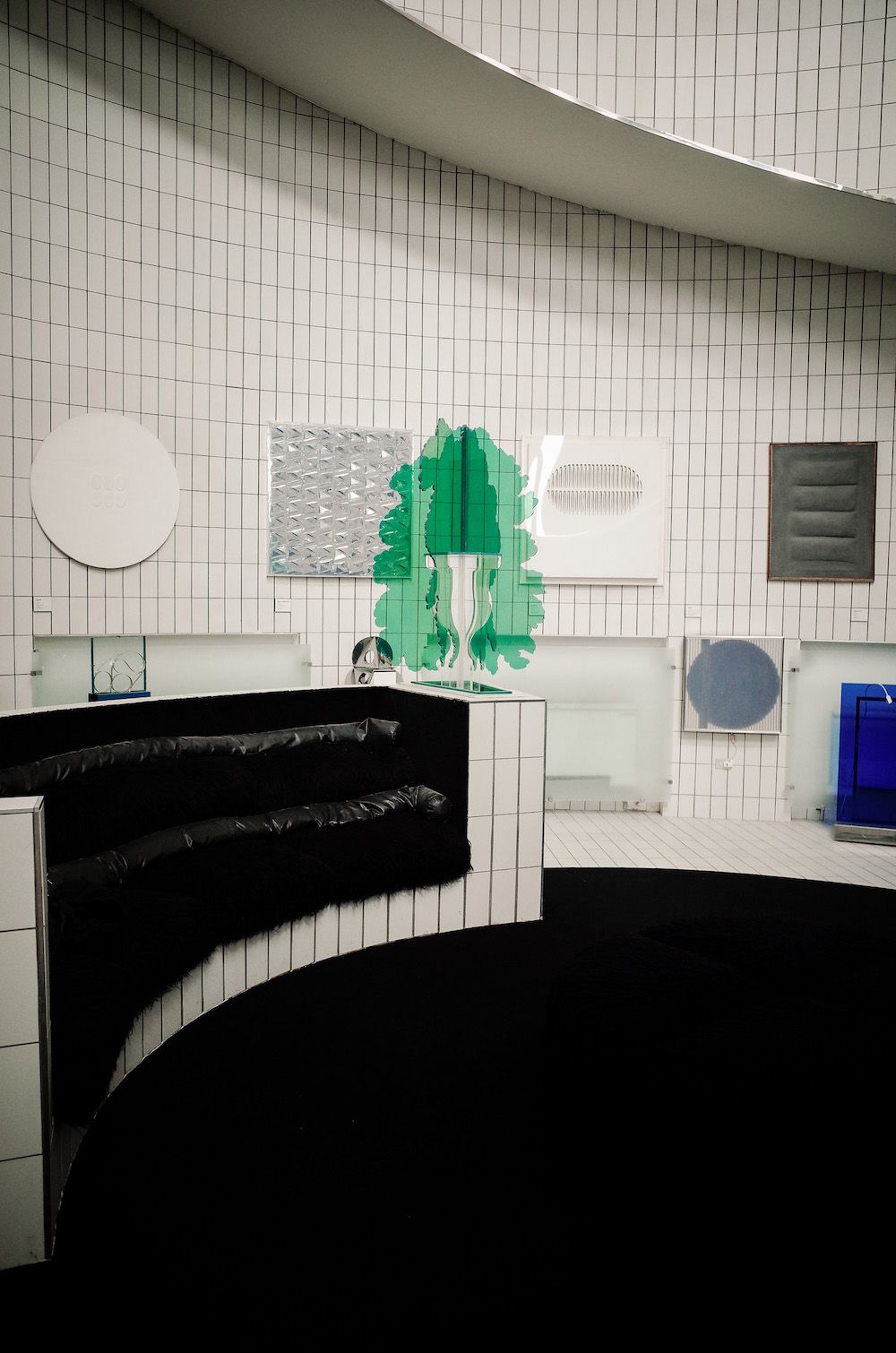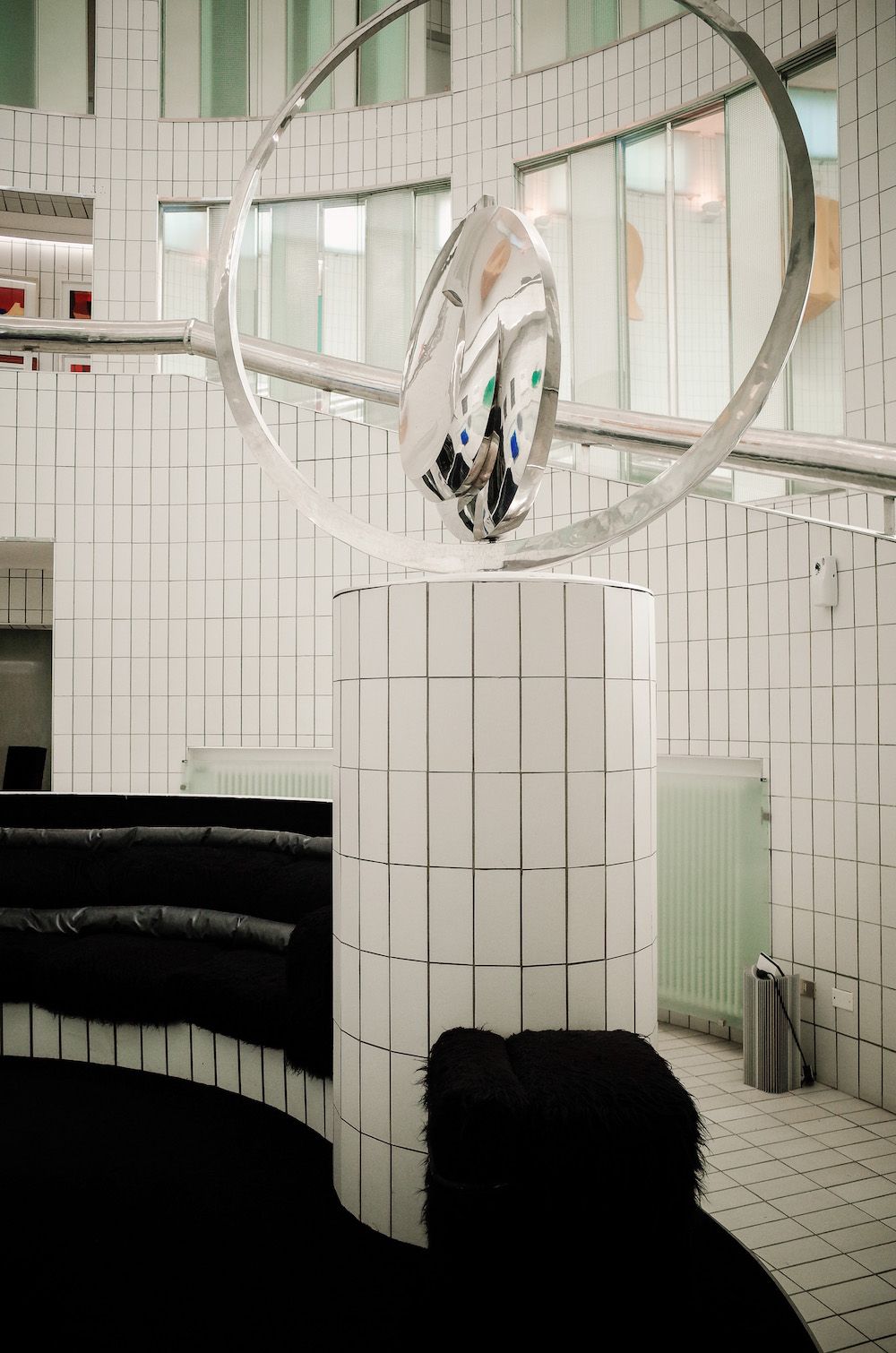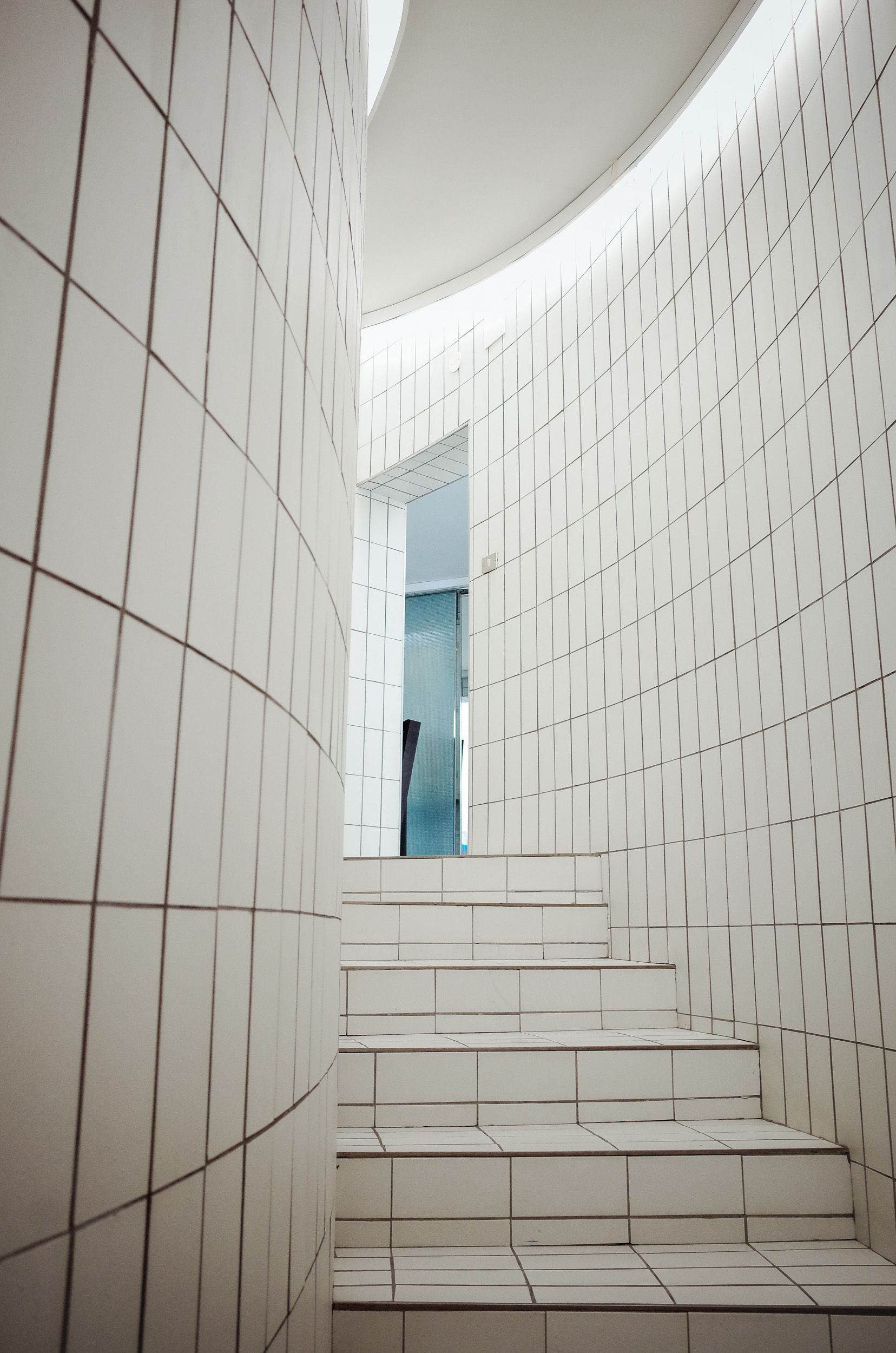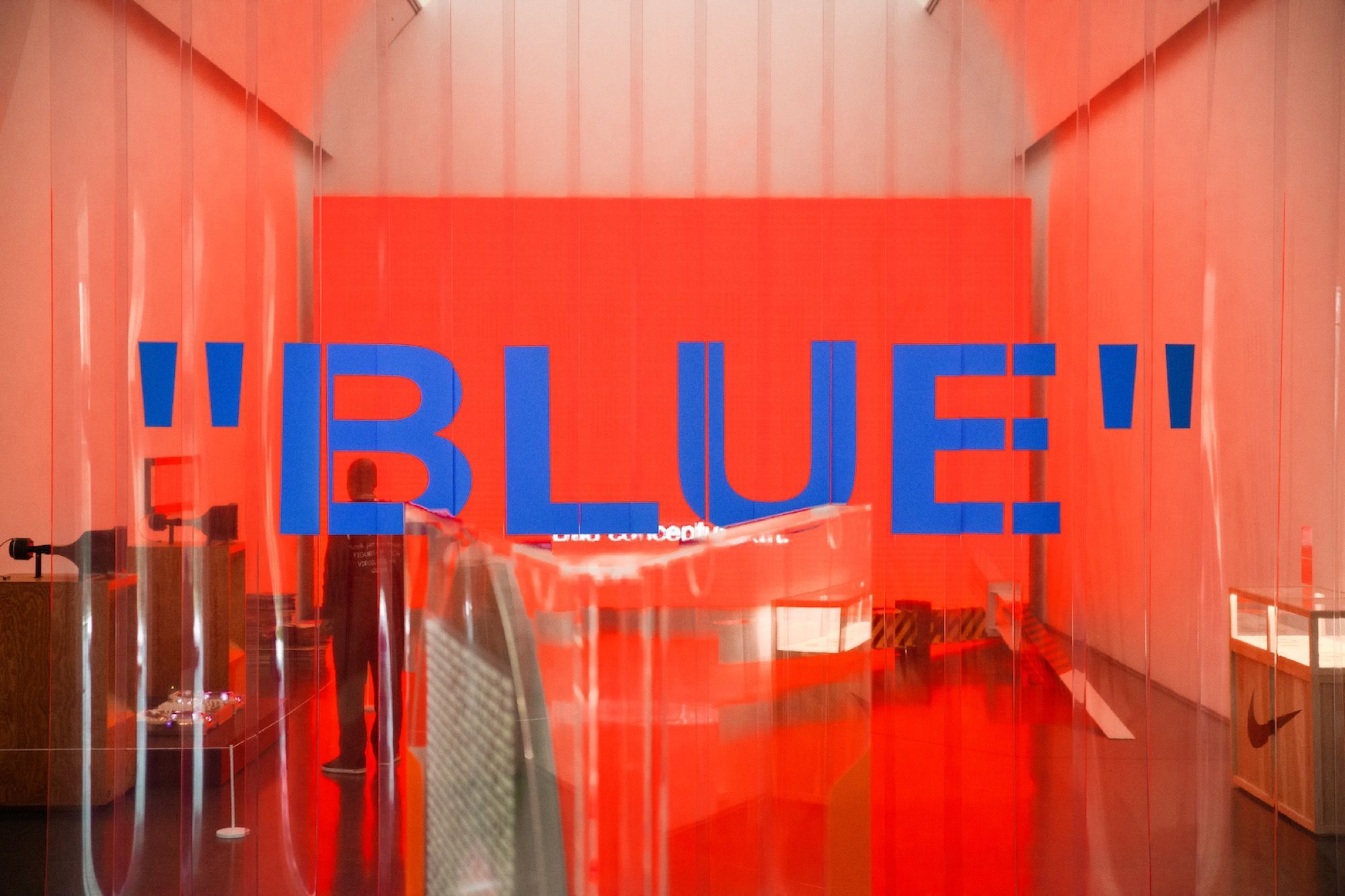
Nanda Vigo's "living museum" for Remo Brindisi A synthesis of the Italian twentieth century
"Too much of an architect for art criticism and too much of an artist for architectural criticism, Nanda Vigo, who attempted to create an all-encompassing work, was cut in half."
Abitare, 2006.
The house-museum that Nanda Vigo designed for the painter Remo Brindisi at Lido di Spina combines an intellectual understanding between two apparently irreconcilable visions: she was avant-garde by vocation, one of the first Art Designers of the second half of the twentieth century in Italy, he was an established exponent of Realism. Brindisi commissioned Vigo to design a space to house a collection, receive friends and work. A manifesto of the integration of the arts - architecture, sculpture, painting, design - and at the same time the programmatic union between art and life, since Brindisi wanted to live in what he loved to call a "living museum": a family home, open so that guests and friends could enjoy the contemporary art collection, about two thousand pieces chosen together with Vigo that document the main artistic currents of the 20th century at an international level, with a particular emphasis on Milan in the '50s and '70s. Monumental works integrated into the architecture, including first of all Lucio Fontana's graffito, measuring six meters by four, then the sculptures of Arturo Martini, Gino Marotta, Giò Pomodoro, the wall of erased words by Emilio Isgrò, the kinetic sculptures.
"It is important," Vigo points out, "to underline the terms of 'house' and 'museum,' which also figuratively define the volumetric functions of the two distinct and intersecting bodies." The focus of the structure is in fact a twelve-meter cylindrical staircase with a steel railing, like an enormous snake that embraces the building, intersecting the different floors and the living, study and exhibition spaces, in a continuous interpenetration. The cylindrical compartment, the connector heart of the house, houses the Conversation pool, a plush-covered circular seating system. Natural light bounces off mirrors and glass and illuminates every corner, creating plays of light, also thanks to the interior cladding in optic white klinker tiles that recall the famous villa Lo Scarabeo sotto la foglia, which Nanda built for the collector Giobatta Meneguzzo in Vicenza, varying a project by Gio Ponti in the late '60s and early '70s, then dismantled.
From the outside you can see the domestic side of the house, while dynamic and aggregated are the public spaces and the terrace overlooking the sea. The large cut near the entrance is caused by the breach that Nanda Vigo invented, when the building was finished, to let in the "sgraffito" by Lucio Fontana that Brindisi saved from the destruction of a Milanese printing house. In a corner of the living room, among the paintings, a small Venetian view by Remo Brindisi. After the artist's death, the museum and the entire patrimony preserved in it were acquired by the Municipality of Comacchio, by the will of Brindisi himself, and are now open to the public to show visitors a place that synthesizes all the contradictory influences of the 20th century in the name of art and beauty.










































